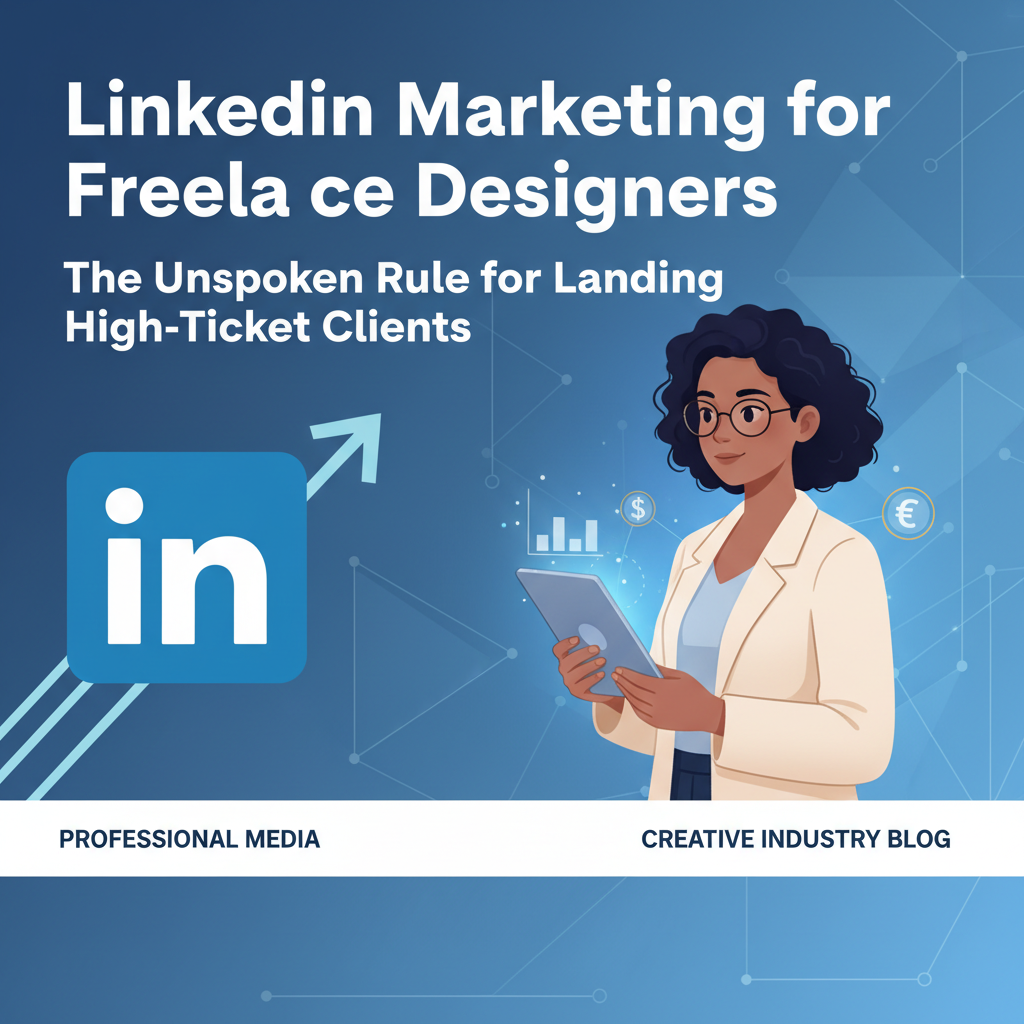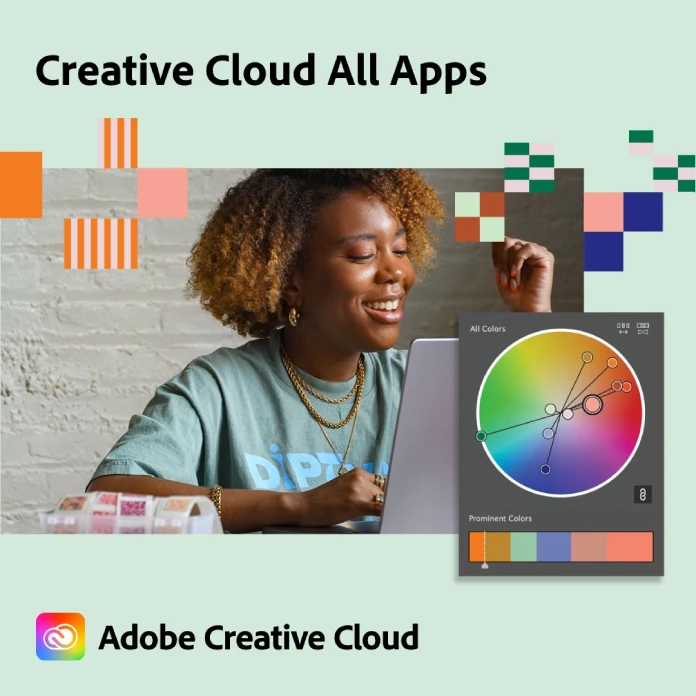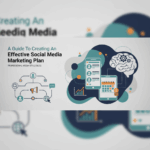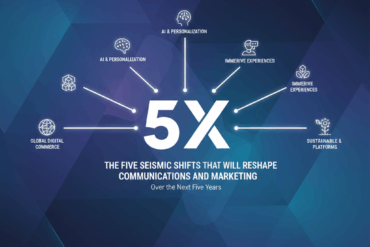Sourced from WATC
Many freelance designers believe their portfolio is their only business card. It is the polished gallery of their best work, designed to speak for itself. This thinking, however, overlooks a powerful, strategic tool for professional growth: LinkedIn marketing for freelance designers. In a competitive market projected to soar past USD 500 billion by 2025, visibility is not just an advantage; it is a necessity. LinkedIn is no longer a simple online resume. It has evolved into a dynamic ecosystem for personal branding, client acquisition, and meaningful network building. For the modern freelance designer, mastering this platform is a non-negotiable skill.
The platform’s sheer scale is staggering. With over a billion members, it represents the largest professional gathering on the planet. Think about that for a moment. This is a digital space where decision-makers, creative directors, and potential clients congregate daily. It’s where business gets done. Consequently, understanding how to navigate this environment is fundamental to building a sustainable and profitable freelance career.
Why Your Ideal Clients Are Already on LinkedIn
LinkedIn is not just another social network; it is a dedicated professional hub. Its user base is distinct. The primary demographic, users aged 25-34, sits squarely in the prime age bracket for both hiring managers and entrepreneurs seeking design services. These are not passive scrollers. In fact, interactions on the platform have grown consistently, demonstrating a highly engaged audience hungry for valuable content.
What does this mean for you as a designer? It means your target audience is actively looking for expertise. They are searching for professionals who can solve their problems. A strong strategy for LinkedIn marketing for freelance designers positions you directly in their path. You are not just showcasing your work; you are demonstrating your value within a business context. Furthermore, an impressive 87% of recruiters use LinkedIn to find and vet candidates. This statistic alone should shift your perspective. Your next big project might not come from a job board but from a recruiter who discovered your expertly crafted profile.
The Marketing Engine: How LinkedIn Generates Real Leads
For B2B (business-to-business) marketers, LinkedIn is the undisputed champion. A massive 89% of B2B marketers use the platform specifically for lead generation because it works. LinkedIn is rated as the most effective social media platform for achieving business goals, a testament to its professional focus and powerful tools. This makes it a goldmine for freelance designers, who primarily operate in a B2B capacity.
Your potential clients are other businesses. They need logos, websites, branding guides, and marketing materials. Therefore, you must be present where they are looking for solutions. Effective LinkedIn marketing for freelance designers involves more than just having a profile. It requires a proactive approach to content and connection. When you share insights, case studies, or process videos, you are not just posting; you are nurturing leads. You build trust and establish yourself as an authority. Consequently, when a company needs a designer, your name is the one that comes to mind. This is the core of effective inbound marketing.
Building Your Brand: More Than Just a Profile
Your LinkedIn profile is the foundation of your entire marketing effort. It needs to be more than a simple work history. Think of it as your digital headquarters. A professional headshot, a compelling headline rich with keywords like “Freelance Graphic Designer | Branding & UI/UX Expert,” and a detailed “About” section are critical. This is your chance to tell your story. What problems do you solve? Who do you help?
Beyond the basics, your profile must serve as a living portfolio. LinkedIn allows you to feature rich media directly in your experience and featured sections. Use this space wisely. Instead of just listing a job, showcase the project. Add high-resolution images of the final design, link to the live website, or share a testimonial from the happy client. This transforms your profile from a static resume into a dynamic, persuasive sales page. Every element should work together to build credibility and make a powerful first impression.
A Powerful Content Strategy for LinkedIn
How do you capture attention on a busy platform? The data offers clear guidance. Visuals reign supreme. Posts with images consistently outperform text-only updates, driving significantly higher engagement. As a designer, this is your natural advantage. Share mock-ups, behind-the-scenes glimpses of your creative process, or carousels that break down a complex design concept.
However, do not underestimate the power of short, insightful text posts or brief videos. Videos under 15 seconds have been shown to boost shareability, making them perfect for quick tips or revealing a new logo animation. The key is consistency. Aim to post at least twice a week during peak engagement times (typically mid-morning and late afternoon from Tuesday to Thursday). This regular activity keeps you visible in your network’s feed and signals to the LinkedIn algorithm that you are an active, valuable contributor.
To stay on top of the latest trends and gather daily inspiration, it is also essential to follow leading voices in the creative industry. For instance, WE AND THE COLOR’s official LinkedIn page is a must-follow. It offers a curated stream of outstanding creative projects and essential business news tailored for professionals like you.
Networking with Purpose and Authenticity
Building a network on LinkedIn is not about collecting thousands of random connections. It is about cultivating meaningful relationships. A core component of LinkedIn marketing for freelance designers is strategic and authentic engagement. This means more than just liking a post. Leave thoughtful comments on the content shared by industry leaders and potential clients. Tag collaborators when you share a project. Congratulate contacts on their work anniversaries or new roles.
This consistent, genuine interaction builds social capital. When you eventually reach out to a potential client with a tailored message, you are no longer a stranger. You are a familiar name from their notifications, a peer who has engaged with their work. This “warm” approach dramatically increases your chances of getting a positive response compared to a completely cold outreach. Remember, people do business with people they know, like, and trust. Your activity on LinkedIn is how you build that trust at scale.
The Fine Print and Final Thoughts
Of course, no platform is without its nuances. As your follower count grows, your organic engagement rate per post may naturally decrease. This makes a smart content strategy, including reposting your top-performing content, even more crucial. It is also wise to be aware of fraudulent accounts, although the platform is actively working to mitigate this issue.
Ultimately, LinkedIn should complement, not replace, your primary portfolio on a personal website or a platform like Behance. Think of it as a powerful marketing and distribution channel that drives qualified traffic to your work.
The evidence is clear. For any serious creative professional, an effective strategy for LinkedIn marketing for freelance designers is indispensable for growth. By optimizing your profile, creating valuable content, and engaging with authenticity, you transform the platform from a passive resume site into a proactive client-acquisition machine. It is where you build your reputation, connect with decision-makers, and secure the high-value projects that will define your career.




